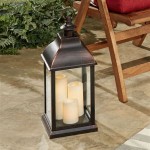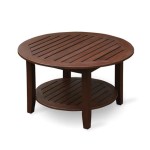Outdoor Peel and Stick Tiles: A Comprehensive Guide
Outdoor peel and stick tiles have emerged as a convenient and relatively affordable option for upgrading patios, decks, balconies, and other outdoor spaces. They offer a DIY-friendly alternative to traditional tiling, promising a quick and simple installation process without the need for specialized tools or professional assistance. However, the suitability and longevity of these tiles in outdoor environments warrant careful consideration. This article explores the characteristics, advantages, disadvantages, installation processes, and maintenance requirements of outdoor peel and stick tiles, providing a comprehensive understanding of this increasingly popular flooring solution.
The fundamental principle behind peel and stick tiles is their adhesive backing. This adhesive layer, typically made from a strong acrylic or rubber-based compound, allows the tiles to adhere directly to a prepared subfloor. The tiles themselves are typically composed of vinyl, composite materials, or even thin layers of natural stone or wood adhered to a backing. The durability and weather resistance of the tile material are critical factors determining the tile's suitability for outdoor applications.
Understanding the Composition and Durability
The material composition of outdoor peel and stick tiles significantly impacts their performance and lifespan. Vinyl tiles are a common choice due to their water resistance and relatively low cost. However, not all vinyl is created equal. High-quality vinyl tiles with UV protection are essential to prevent fading, cracking, and warping under prolonged exposure to sunlight. Composite materials, often a blend of recycled plastics and wood fibers, can offer enhanced durability and resistance to moisture and temperature fluctuations. These composite options often mimic the appearance of natural wood, providing an aesthetically pleasing alternative to traditional decking.
Stone and wood veneer peel and stick tiles offer a more sophisticated aesthetic. However, these options require careful selection and application. The adhesive must be capable of bonding effectively with the natural materials, and the tiles must be sealed properly to protect them from moisture damage and staining. The thinness of the veneer also makes them more susceptible to damage from heavy objects or foot traffic. The underlying substrate needs to be exceptionally smooth and even to prevent cracking or uneven wear on these thinner materials.
Beyond the tile material itself, the quality of the adhesive is paramount. Outdoor adhesives must be formulated to withstand a wide range of temperatures, resist moisture penetration, and maintain a strong bond over time. Inferior adhesives can fail, leading to tiles peeling up, shifting, or becoming detached from the subfloor. It’s crucial to select tiles specifically designed for outdoor use and to carefully evaluate the adhesive properties described by the manufacturer.
Furthermore, the overall thickness of the tile contributes to its durability. Thicker tiles generally offer better resistance to wear and tear, providing a more stable and long-lasting surface. Consider the intended use of the outdoor space and the level of foot traffic it will receive when selecting the appropriate tile thickness.
Installation Considerations and Subfloor Preparation
The ease of installation is a major selling point for peel and stick tiles. However, proper subfloor preparation is essential for a successful and long-lasting installation. The subfloor must be clean, dry, smooth, and level. Any existing debris, dirt, or loose particles must be removed. Cracks, holes, or uneven surfaces must be repaired and filled to create a perfectly even base.
For concrete patios or balconies, a pressure washer can be used to thoroughly clean the surface. Any existing coatings or sealants should be removed to ensure proper adhesion. If the concrete is uneven, a self-leveling compound can be applied to create a smooth, flat surface. Allow the self-leveling compound to cure completely before proceeding with the tile installation.
For wooden decks, ensure that the decking boards are structurally sound and free from rot or decay. Replace any damaged boards before proceeding. Sand the surface to create a smooth and even base. Fill any gaps or cracks with wood filler. A plywood or cement board underlayment may be required to provide a stable and smooth surface for the tiles. Ensure the underlayment is properly secured to the decking boards using screws or nails.
Once the subfloor is prepared, it is recommended to apply a primer specifically designed for use with peel and stick tiles. The primer helps to improve adhesion and prevent the adhesive from drying out prematurely. Allow the primer to dry completely before installing the tiles. Dry lay the tiles to determine the best layout and avoid unsightly cuts or gaps. Use a utility knife or tile cutter to cut the tiles to the desired size and shape. Peel off the backing and carefully position the tile on the subfloor. Press firmly to ensure a strong bond. Use a roller to apply even pressure and eliminate any air pockets.
It is imperative to follow the manufacturer's instructions precisely. Different tile types and adhesives may have specific installation requirements. Ignoring these instructions can lead to adhesion problems and ultimately shorten the lifespan of the tiles.
The ambient temperature during installation can also affect the adhesive's performance. Avoid installing the tiles in extreme heat or cold, as this can compromise the adhesive's bonding ability. Ideally, the temperature should be between 65°F and 85°F.
Maintenance and Longevity in Outdoor Environments
Even with proper installation, outdoor peel and stick tiles require ongoing maintenance to ensure their longevity and aesthetic appeal. Regular cleaning is essential to remove dirt, debris, and stains. Sweep or vacuum the tiles regularly to prevent the accumulation of dirt or leaves. Wash the tiles with a mild detergent and water as needed. Avoid using harsh chemicals or abrasive cleaners, as these can damage the tile surface or the adhesive.
Inspect the tiles regularly for signs of damage, such as peeling, cracking, or fading. Repair any damage promptly to prevent further deterioration. Loose tiles should be reattached using a suitable adhesive. Cracked or damaged tiles should be replaced. Consider purchasing extra tiles during the initial installation to have replacements readily available.
Exposure to sunlight, moisture, and temperature fluctuations can significantly impact the lifespan of outdoor peel and stick tiles. Applying a sealant or protective coating can help to prolong their life and enhance their resistance to weathering. Choose a sealant specifically designed for the type of tile being used. Reapply the sealant periodically, as recommended by the manufacturer.
In regions with harsh winters, snow and ice can pose a significant threat to outdoor tiles. Avoid using de-icing salts on the tiles, as these can damage the surface and corrode the adhesive. Consider using a plastic shovel to remove snow and ice. Cover the tiles with a tarp or other protective material during the winter months to minimize exposure to the elements.
The expected lifespan of outdoor peel and stick tiles varies depending on the material, quality of the adhesive, installation practices, and maintenance efforts. With proper care, high-quality tiles can last for several years. However, it is important to recognize that peel and stick tiles are not a permanent flooring solution. They are generally less durable than traditional tiling and may require replacement after a certain period.
When selecting outdoor peel and stick tiles, prioritize quality over cost. Investing in high-quality materials and adhesives will ultimately result in a more durable and long-lasting installation. Read reviews and testimonials from other customers to get a better understanding of the tile's performance in real-world conditions. Consult with a flooring professional to get expert advice on selecting the right tiles for your specific needs and climate.
While outdoor peel and stick tiles offer a convenient and relatively affordable way to enhance outdoor spaces, understanding their limitations and adhering to proper installation and maintenance practices are crucial for achieving a successful and lasting result. Careful planning, meticulous preparation, and ongoing care are essential to maximize the lifespan and aesthetic appeal of these tiles.
Ultimately, the suitability of outdoor peel and stick tiles depends on individual needs and expectations. While they offer a quick and easy DIY option, they may not be the best choice for high-traffic areas or climates with extreme weather conditions. Weigh the pros and cons carefully before making a decision, and be prepared to invest the time and effort required to maintain them properly. Thorough research and informed decision-making are key to ensuring a satisfactory outcome.

Tuary 12 X Plastic Interlocking Deck Tiles Square Waterproof Patio Balcony Dark Brown 44 Pack Staight Groove

Self Adhesive Outdoor Floor Tiles Archiproducts

Can You Use Peel And Stick Tiles For Outdoor Spaces

Gray Retro Vinyl Tiles Pvc Floor Removable Tile Stickers Self Adhesive Flooring Peel And Stick For Kitchen Etsy

Koeckritz Rugs Cityscape Do It Yourself 24 X Peel Stick Indoor Outdoor Carpet Tile Multi Purpose Pet Made From Recycled Plastic Bottles Select Your Color

Is Peel And Stick Tile A Good Idea For Outdoor Spaces

Foss Floors 24 X Peel And Stick Indoor Outdoor Starboard Carpet Tile 60 Sq Ft 15 Piece

Foss Cascade Sky Gray Commercial Residential 24 X In Peel And Stick Carpet Tile Square 60 Sq Ft 7cdmn6615pk The Home

Koeckritz Crochet Do It Yourself 24 X Peel Stick Indoor Outdoor Carpet Tile Multi Purpose Pet Made From Recycled Plastic Bottles Select Your Color

Foss Floors Couture Peel Stick Carpet Tiles 24 X Mocha Set Of 15 Office








